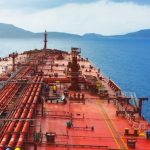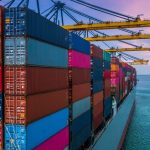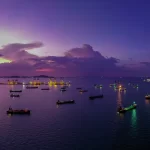The new shipping alliance “Premier Alliance,” which includes Korea’s largest shipping company HMM, will officially launch this month. HMM plans to focus on developing new routes and deploying eco-friendly vessels in collaboration with the partner shipping companies.
On the 11th, the U.S. Federal Maritime Commission (FMC) announced that the Premier Alliance agreement went into effect starting from the 9th (local time). The Premier Alliance applied for agreement approval with the FMC on October 28 of last year; however, approval was postponed once in December. At that time, the FMC requested additional information, and after a two-month review process, it received final approval. Other countries outside the U.S. do not need to undergo an approval process.
The Premier Alliance is a shipping collaboration formed by HMM, Japan’s Ocean Network Express (ONE), and Taiwan’s Yang Ming. Starting this month, it will provide 30 routes, including 12 on the U.S. West Coast, 4 on the U.S. East Coast, 6 in Northern Europe, 5 in the Mediterranean, and 3 in the Middle East. The three shipping companies will cooperate for the next five years.
HMM will also launch new container services through the Premier Alliance. They plan to establish the Transatlantic route (TA1), which connects Europe and North America, and the India-Northern Europe route (INX). The TA1 route marks HMM’s return after terminating its service in 2018, seven years ago. Starting in April, they plan to add the Asia to East Coast South America service (FL2) in collaboration with ONE.
HMM was part of “The Alliance,” but following the withdrawal of the world’s fifth-largest shipping company, Hapag-Lloyd, a new alliance was formed. Before the launch of the Premier Alliance, the global shipping alliances comprised a three-power structure: ▲2M (MSC, Maersk) ▲Ocean Alliance (CMA, CGM, COSCO, Evergreen) ▲The Alliance (Hapag-Lloyd, ONE, HMM, Yang Ming).
HMM plans to deploy eco-friendly vessels powered by liquefied natural gas (LNG) and methanol on major routes. Initially, in the first quarter, two LNG-powered container ships with a capacity of 7700 TEU (1 TEU is one 6m container) will be used on the route connecting the Mediterranean and East Asia. Additionally, nine methanol-powered container ships with a capacity of 9000 TEU are planned to be gradually introduced on major routes starting from the first half of this year until next year.
Source: CHOSUNBIZ






